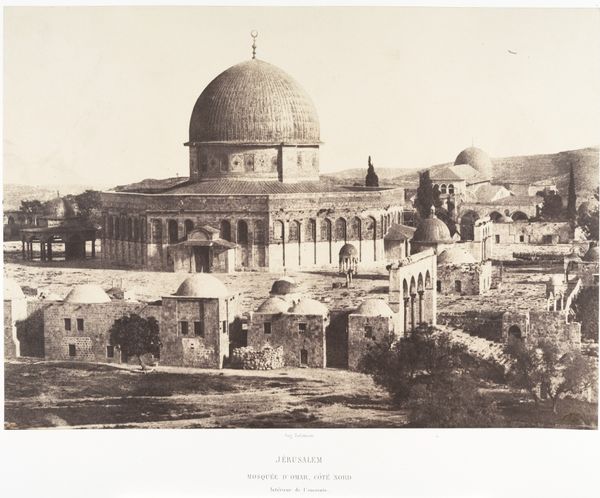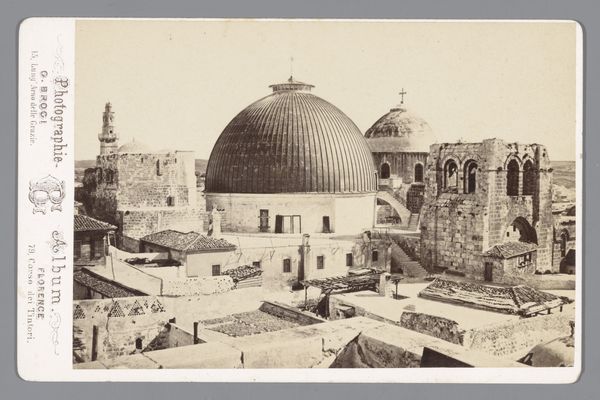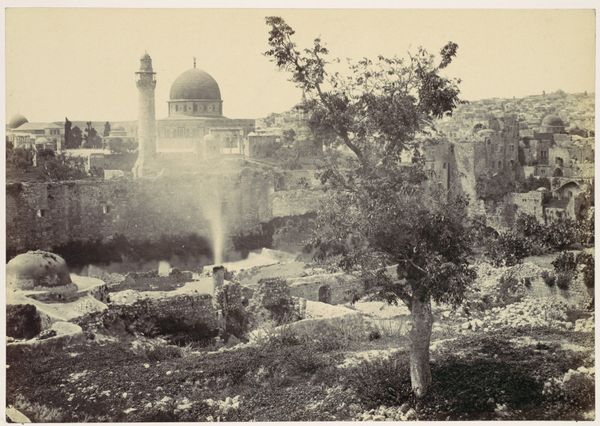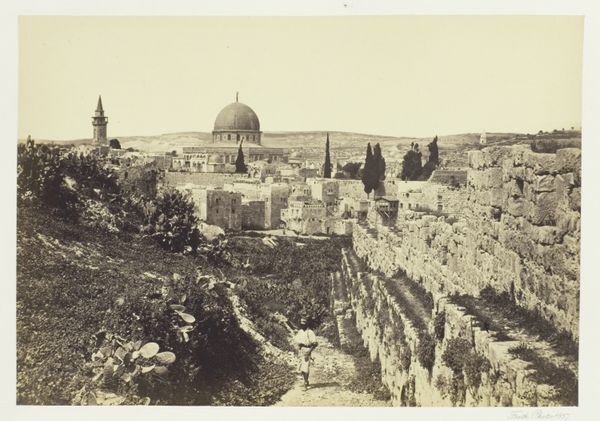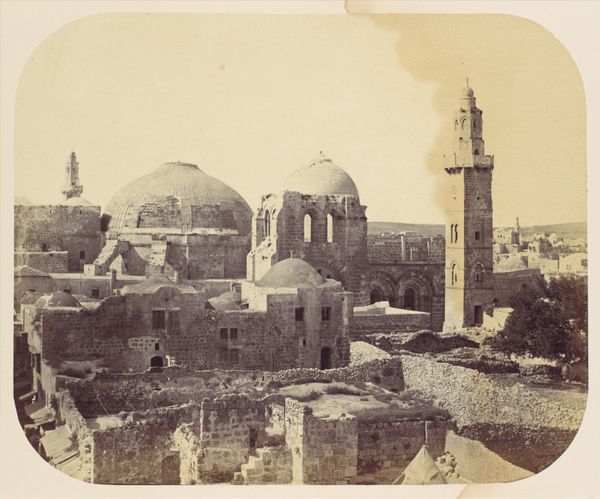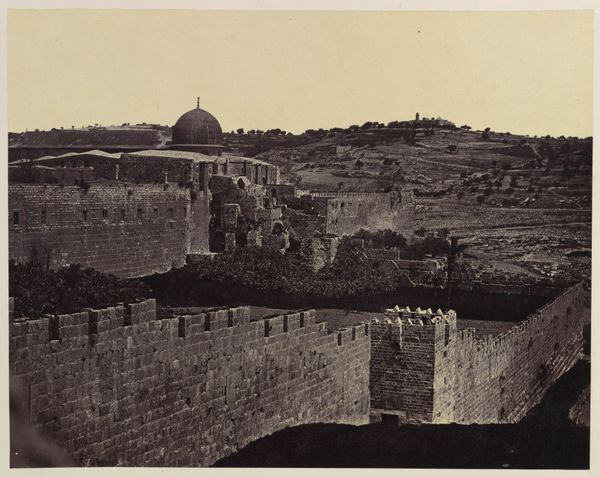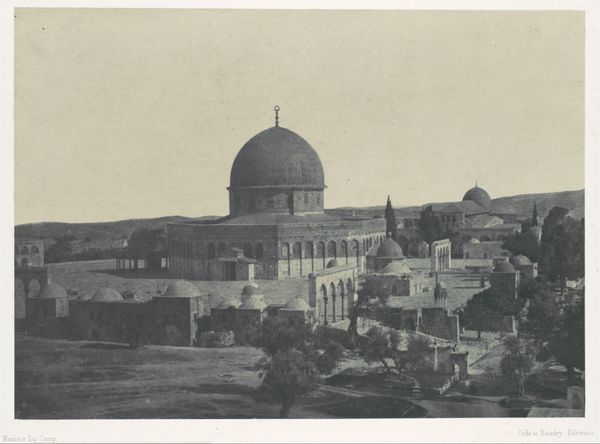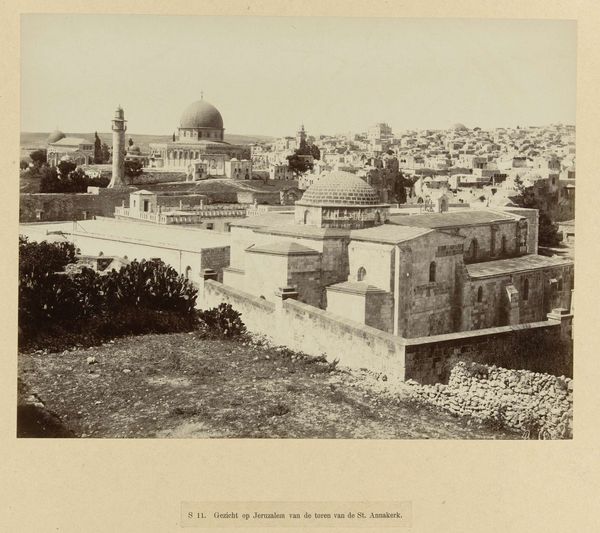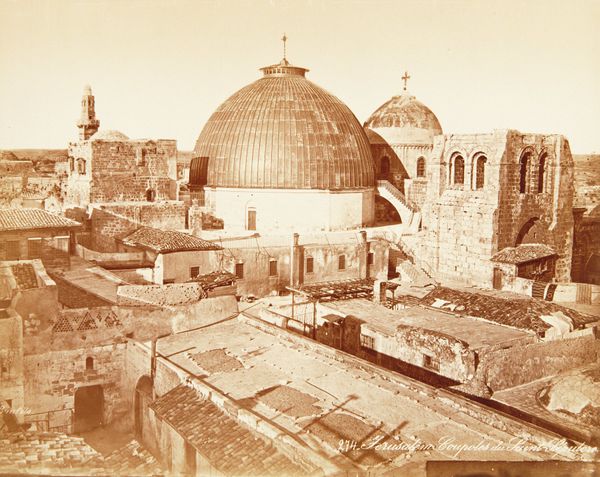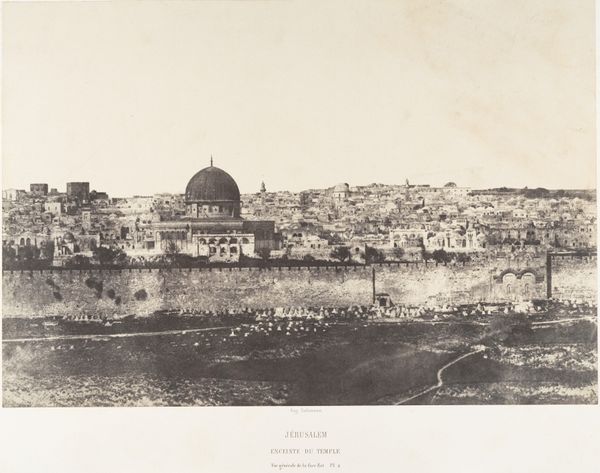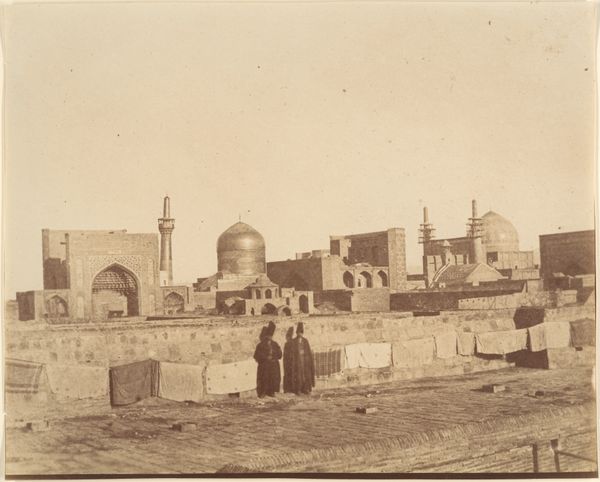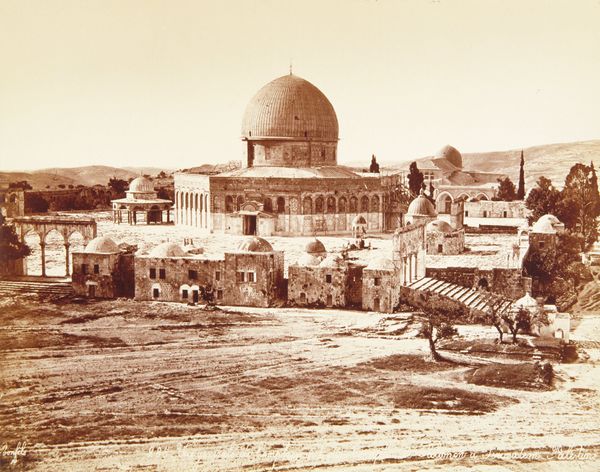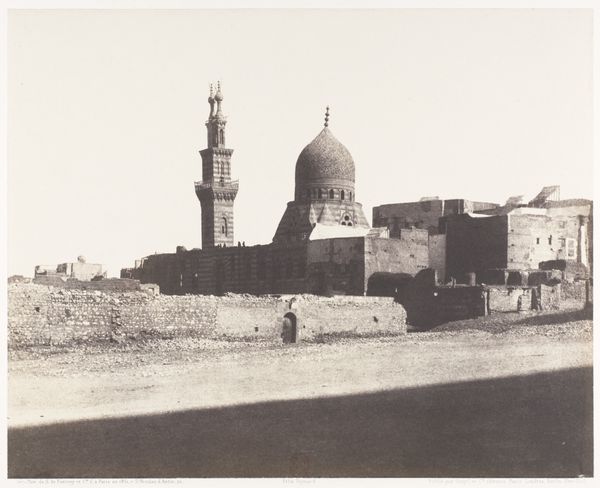
print, daguerreotype, photography, albumen-print
# print
#
landscape
#
daguerreotype
#
photography
#
orientalism
#
cityscape
#
albumen-print
Dimensions: 16.4 × 23.1 cm (image/paper); 29.4 × 42.6 cm (album page)
Copyright: Public Domain
Curator: Editor: This is "Jerusalem from the City Wall," a photograph taken by Francis Frith in 1857. It's a beautiful albumen print that captures the cityscape in great detail. I’m struck by how this seemingly neutral landscape inevitably participates in complex Orientalist narratives and raises questions about power. What do you see in this piece? Curator: Beyond the visual allure of the scene, I see a powerful intersection of art, politics, and colonial ambition. Frith, as a British photographer, was working within a specific historical context. Consider the role photography played in constructing Western perceptions of the “Orient” during the age of imperialism. How does this image contribute to or challenge those perceptions? Editor: It feels romanticized, yet also distanced, like observing a scene rather than participating in it. The framing almost puts the viewer in a position of power. I am starting to question the context in which photographs are shown and disseminated as much as their inherent value. Curator: Exactly! It's crucial to question that vantage point. The photograph aestheticizes a landscape ripe with religious and cultural significance, potentially flattening the lived realities of the people there. It also presents the city as timeless and unchanging. Where does it position the West in relationship to this seemingly eternal space, and what does this representation elide? Editor: So, it’s not just a pretty picture, but a loaded representation, actively participating in a bigger power dynamic. I hadn’t fully appreciated how seemingly straightforward images could be so deeply implicated in colonialism and cultural narratives. Curator: Precisely. It prompts us to think critically about the photographer's intent, the viewer's interpretation, and the historical forces shaping both. What do you think the role of museums should be in handling these difficult, if visually beautiful, works? Editor: I suppose the responsibility would be to present it in context, acknowledging the biases and power structures at play when displaying items from another region. I will surely consider photography through a decolonial lens from now on. Curator: That’s a valuable takeaway, isn’t it? Understanding that what we see is always filtered through a lens of power and perspective, it challenges our engagement with the image in powerful ways.
Comments
No comments
Be the first to comment and join the conversation on the ultimate creative platform.
